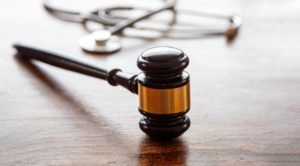Motor-vehicle collisions involving tractor-trailers are often devastating because of their sheer size and weight. Passenger vehicle occupants are especially vulnerable in large truck crashes because 18-wheelers are so much larger than cars, pickup trucks, and SUVs.
Most fatalities in such wrecks are the occupants of smaller vehicles. Those who are fortunate enough to survive are likely to sustain serious injuries and, as a result, incur significant damages.
In order to recover compensation for their losses, injured parties must gather sufficient evidence of both liability and damages, which typically starts at the scene. For example, if they document the wreckage, the photographs can help accident reconstruction experts determine what happened in the moments leading up to the collision.
Here are just a few tips for taking photos of a truck accident scene:
- Provide a Sense of Scale
Providing a sense of scale in most of the photos will ensure you leave the scene with a comprehensive record of the wreckage. Before shooting skid marks, for example, place an ice scraper on the ground next to them. When shooting larger details, on the other hand, include undamaged objects like stop signs and telephone poles in the frame to provide a sense of scale.
- Document Every Vehicle Involved
Documenting the damage to your own car may be a priority for insurance purposes, but accident reconstruction experts need to see the damage that every vehicle incurred to piece together what happened. After you have photographed your own car, be sure to shoot the tractor-trailer from all angles. If there were any other vehicles involved, photograph them, as well.
- Capture Details Inside the Car
Photographs of your car’s interior can help your attorney prove damages during the subsequent claims process. Details worth capturing include deployed airbags, broken glass, loose debris, and bloodstains.
- Look for Contributing Factors
After you have photographed the truck, your own car, and any other vehicles involved, take a step back and survey the scene from a distance. Could anything in the area have contributed to the accident? A patch of ice, perhaps, or several large potholes?
Roadwork, heavy congestion, and reduced visibility are just a few examples of environmental factors that can play a role in catastrophic collisions. Capturing such factors on camera will add to the strength of your case, especially if those involved claim you were liable. If certain factors are hard to photograph, like foggy conditions, eyewitness testimony and local weather reports can serve as evidence.
Discuss Your Case with a Truck Accident Lawyer in Minneapolis
If you were hurt in a collision with a commercial driver, the legal team at Bradshaw & Bryant can evaluate your case to determine if you may be entitled to compensation. Our Minnesota personal injury attorneys will conduct a thorough investigation and gather the evidence needed to strengthen your claim. Call 800-770-7008 or use our Online Contact Form to set up a free consultation with a truck accident attorney in Minneapolis.

A founding partner with Bradshaw & Bryant, Mike Bryant has always fought to find justice for his clients—knowing that legal troubles, both personal injury and criminal, can be devastating for a family. Voted a Top 40 Personal Injury "Super Lawyer" multiple years, Mr. Bryant has also been voted one of the Top 100 Minnesota "Super Lawyers" four times.










Comments for this article are closed.